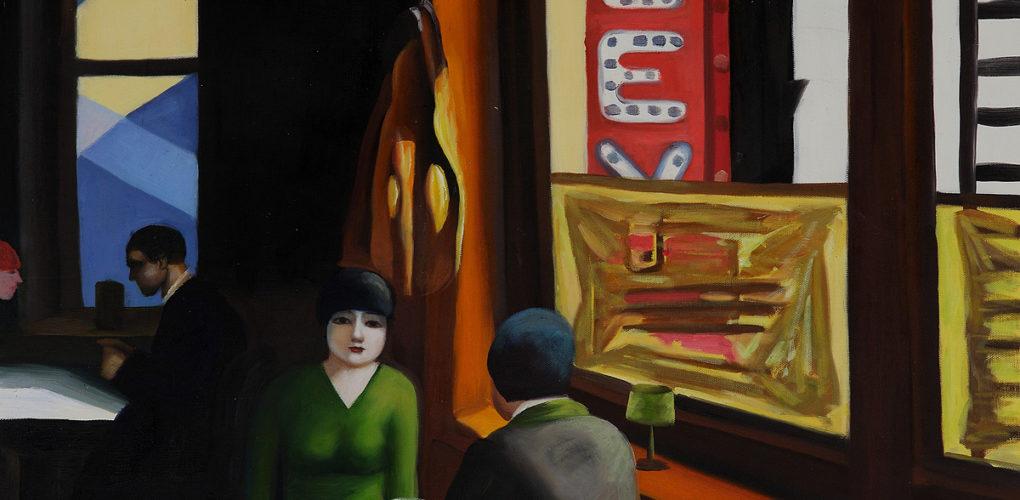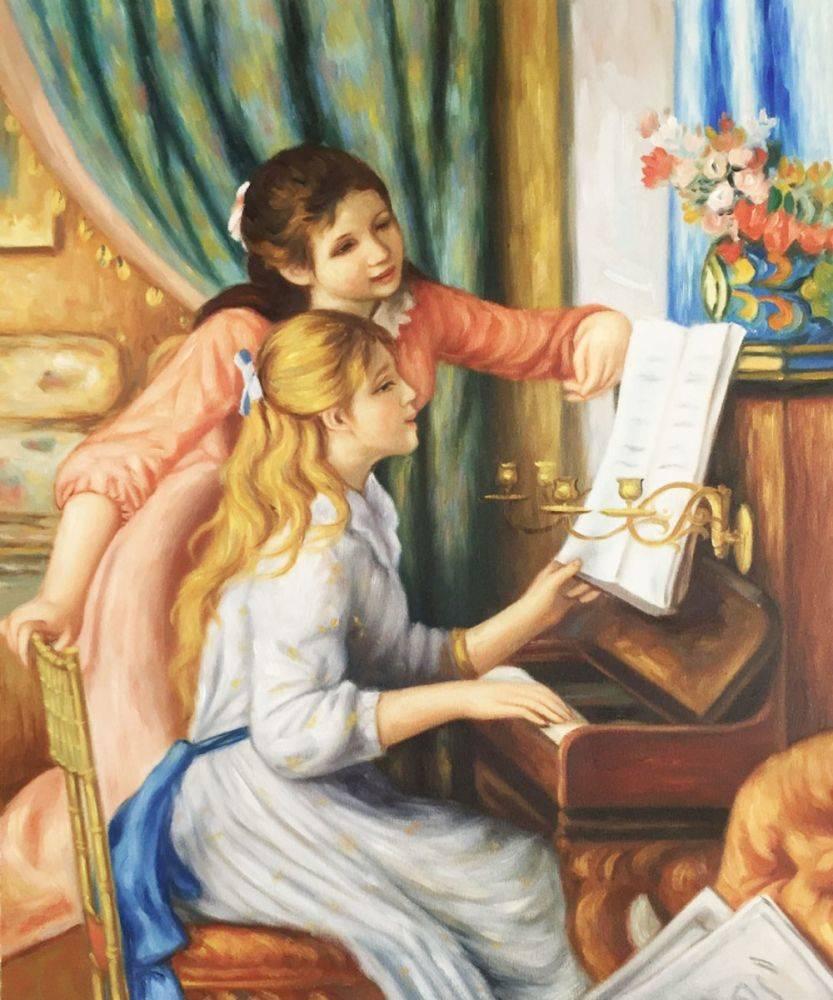Art
Art Reflections
Four Master Artists Talk Art and Why They Paint
When the viewer considers a famous work of art the artist often comes to mind. What did the artist intend to communicate? Why does the artist choose this subject above others? What makes the art what it is: shape, line, use of space and volume, or the use of color? Consider four works of art by Hopper, Gauguin, Van Gogh, and Degas. Consider four quotes by each of these artists as you look at their paintings.
“If you could say it in words, there’d be no reason to paint….No amount of skilful invention can replace the essential element of imagination.” – Edward Hopper
 Edward Hopper completed “Chop Suey” in 1929, oil on canvas. According to the National Gallery of Art, Hopper and his wife often frequented a restaurant like the one depicted in this painting, and the artist depicts a moment “before or after the main event,” — the meal. The female figures do not seem to be engaged in conversation, and indeed though there is a degree of skillful invention in the composition, it is left to the reader to create the story, to fill in the blank. The artist has placed the scene at this restaurant on an upper floor, and it is as though the viewer is seated at an adjacent table.
Edward Hopper completed “Chop Suey” in 1929, oil on canvas. According to the National Gallery of Art, Hopper and his wife often frequented a restaurant like the one depicted in this painting, and the artist depicts a moment “before or after the main event,” — the meal. The female figures do not seem to be engaged in conversation, and indeed though there is a degree of skillful invention in the composition, it is left to the reader to create the story, to fill in the blank. The artist has placed the scene at this restaurant on an upper floor, and it is as though the viewer is seated at an adjacent table.
“I shut my eyes in order to see” – Paul Gauguin
 Paul Gauguin completed “Will You Marry Me?” in 1892, oil on canvas. It is known that Gauguin traveled to Tahiti in 1891 for the first time. In a time where colonists forced native people to wear missionary clothing, Gauguin portrayed one more fluid and organic figure juxtaposed with a more rigid and “properly” dressed figure.
Paul Gauguin completed “Will You Marry Me?” in 1892, oil on canvas. It is known that Gauguin traveled to Tahiti in 1891 for the first time. In a time where colonists forced native people to wear missionary clothing, Gauguin portrayed one more fluid and organic figure juxtaposed with a more rigid and “properly” dressed figure.
When the eyes are shut, the details are committed to memory, but the details can shift based on the artist’s or viewer’s interpretation. Abstraction, as used here, may allow a concept to be realized more fully than photo-realistic use of light and line.
“As practice makes perfect, I cannot but make progress; each drawing one makes, each study one paints, is a step forward.” – Vincent Van Gogh
 Vincent Van Gogh completed “Starry Night Over the Rhone” in 1889, oil on canvas. It is on the banks of the Ronne River in Arles, France. Here Van Gogh captures the effects of gas lamplight across the water at night. The artist is known to have suffered from severe mental anxiety and many suggest his dramatic brushwork was as eventful as his emotional life, the two inexplicably linked. His use of light is the result of the journey to Arles later in his career. At this time, we witness the “Starry Night style” that Van Gogh becomes famous for coming to life.
Vincent Van Gogh completed “Starry Night Over the Rhone” in 1889, oil on canvas. It is on the banks of the Ronne River in Arles, France. Here Van Gogh captures the effects of gas lamplight across the water at night. The artist is known to have suffered from severe mental anxiety and many suggest his dramatic brushwork was as eventful as his emotional life, the two inexplicably linked. His use of light is the result of the journey to Arles later in his career. At this time, we witness the “Starry Night style” that Van Gogh becomes famous for coming to life.
“Only when he no longer knows what he is doing does the painter do good things.” – Edgar Degas
 Edgar Degas completed “Miss Lala at The Cirque Fernando” in 1879, oil on canvas. According to The Morgan Library and Museum, Degas attended the performance of an aerialist known as Miss La La. He produced many studies of the performer before finishing his celebrated painting. The aerialist performed her tricks over seventy feet above him as he created his studies, suspended by a rope clenched between her teeth.
Edgar Degas completed “Miss Lala at The Cirque Fernando” in 1879, oil on canvas. According to The Morgan Library and Museum, Degas attended the performance of an aerialist known as Miss La La. He produced many studies of the performer before finishing his celebrated painting. The aerialist performed her tricks over seventy feet above him as he created his studies, suspended by a rope clenched between her teeth.
Degas is famous for his portrayal of performers and bathers, his ability to capture the power of movement nearly in a single frame.
Later in life, Degas began to lose his eyesight but his work and technique remain just as powerful as the beginning of his career.
The viewer will see that art is more than composition and technique. By each artist’s own words we witness the need of the artist to render the clues to the imagination, the raw presence of the aerialist, of gas lights on the water, and the silence of contrasting figures. As Gauguin suggests, perhaps we should take in the elements and close our eyes to truly see.




